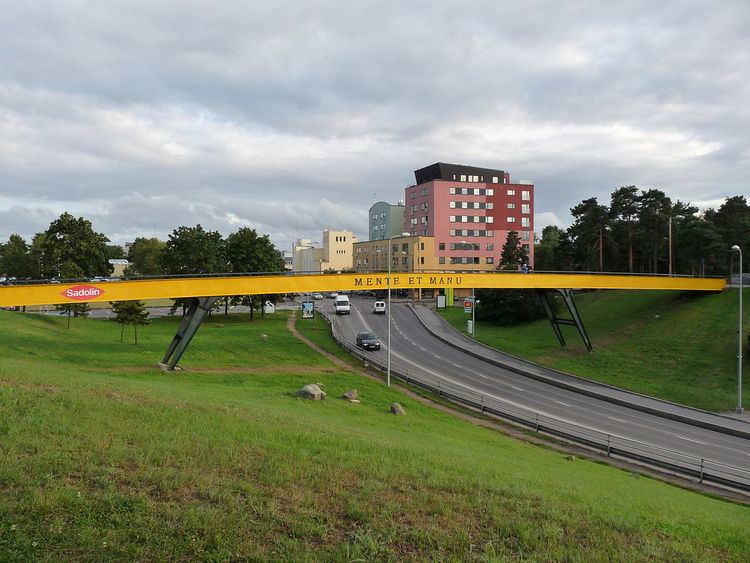Country Estonia Area 28 km² | Website nomme-district Local time Tuesday 3:27 PM | |
 | ||
Weather 4°C, Wind S at 21 km/h, 92% Humidity Points of interest Nõmme–Mustamäe maastikukaitseala, Glehn's Castle, Nõmme Museum | ||
Nõmme (Estonian for "Heath") is one of the 8 administrative districts (Estonian: linnaosa) of Tallinn, the capital of Estonia. It has a population of 39,564 (As of 1 November 2014) and covers an area of 28 km2 (11 sq mi), population density is 1,413.0/km2 (3,660/sq mi). The district mostly consists of older private houses and is sometimes known as the "forest city." It is one of the wealthiest regions in Estonia.
Contents
Map of N%C3%B5mme, Tallinn, Estonia
History
Nõmme was founded by Nikolai von Glehn, the owner of Jälgimäe Manor, in 1878 as a summerhouse district. The development started around the railway station. In 1926 it was granted town rights, but in the beginning of the Soviet occupation in 1940, it was unified to Tallinn and remains as one of the eight districts of Tallinn today.
There are a lot of historical sights on Nõmme, like Glehn's Castle, Kalevipoeg sculpture (also known as "Glehn's Devil"), cinema building "Victoria Palace", and Nõmme Market. Additionally to the historical sights there are many other must see places, like Vanaka hill, ski jumping tower, Rahumäe cemetery, and Pääsküla Bog.
Geography
Nõmme is divided into 10 subdistricts (Estonian: asum): Hiiu, Kivimäe, Laagri, Liiva, Männiku, Nõmme, Pääsküla, Rahumäe, Raudalu, Vana-Mustamäe.
There are 6 stations in Nõmme on the Elron's western route: Rahumäe, Nõmme, Hiiu, Kivimäe, Pääsküla, Laagri. Plus there's a Liiva station on Edelaraudtee's western route.
Population
Nõmme has a population of 39,564 (As of 1 November 2014).
